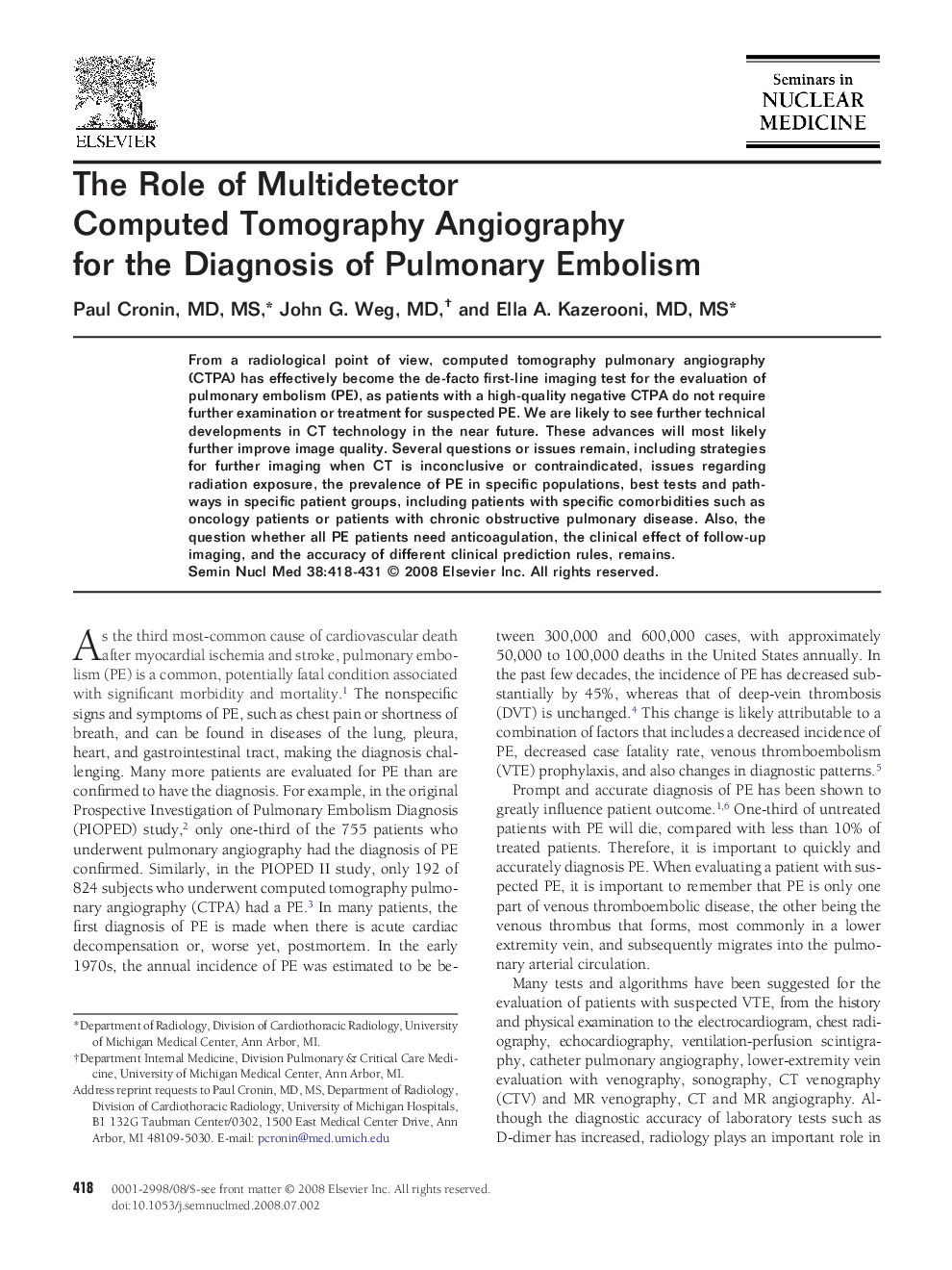| Article ID | Journal | Published Year | Pages | File Type |
|---|---|---|---|---|
| 4251220 | Seminars in Nuclear Medicine | 2008 | 14 Pages |
From a radiological point of view, computed tomography pulmonary angiography (CTPA) has effectively become the de-facto first-line imaging test for the evaluation of pulmonary embolism (PE), as patients with a high-quality negative CTPA do not require further examination or treatment for suspected PE. We are likely to see further technical developments in CT technology in the near future. These advances will most likely further improve image quality. Several questions or issues remain, including strategies for further imaging when CT is inconclusive or contraindicated, issues regarding radiation exposure, the prevalence of PE in specific populations, best tests and pathways in specific patient groups, including patients with specific comorbidities such as oncology patients or patients with chronic obstructive pulmonary disease. Also, the question whether all PE patients need anticoagulation, the clinical effect of follow-up imaging, and the accuracy of different clinical prediction rules, remains.
